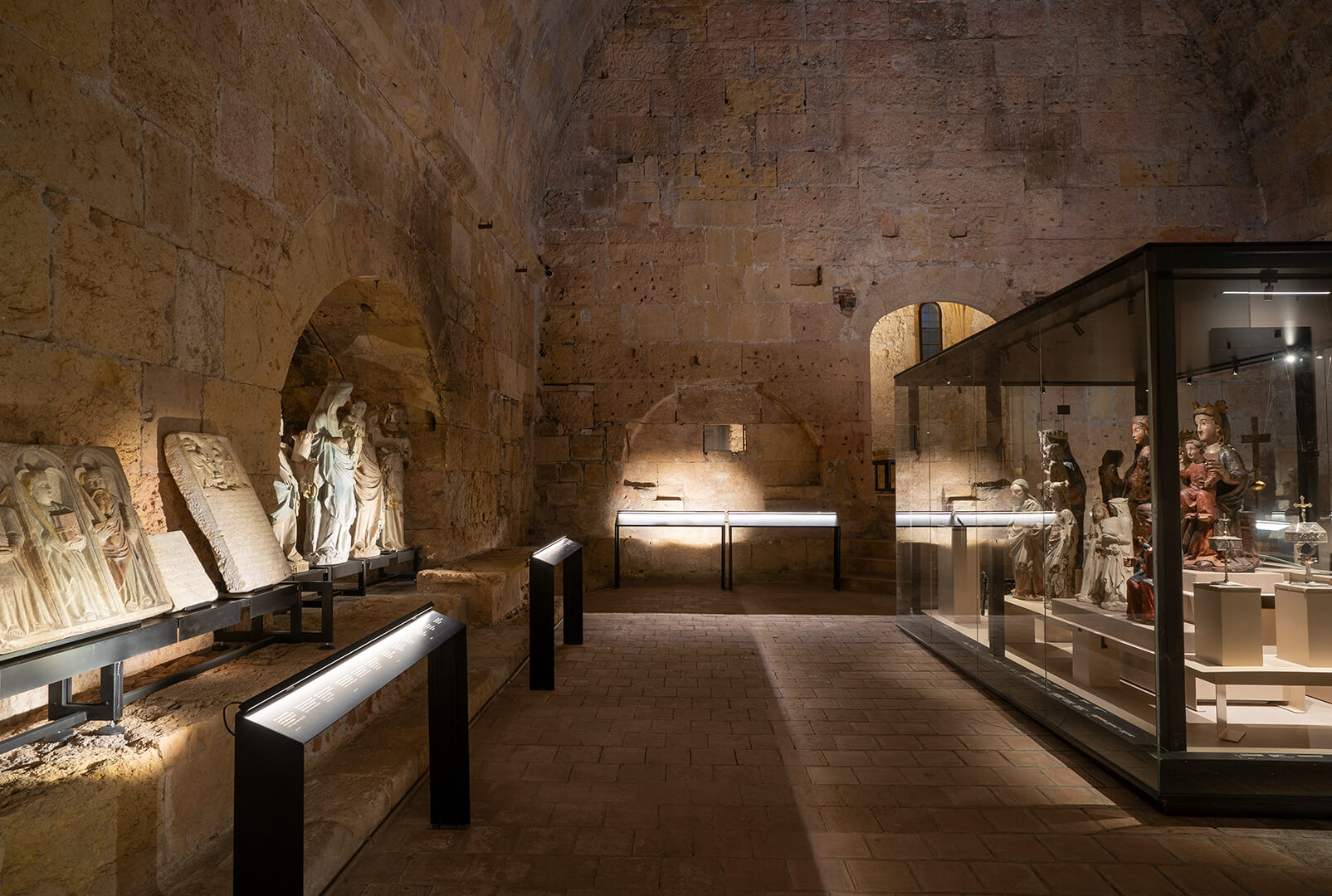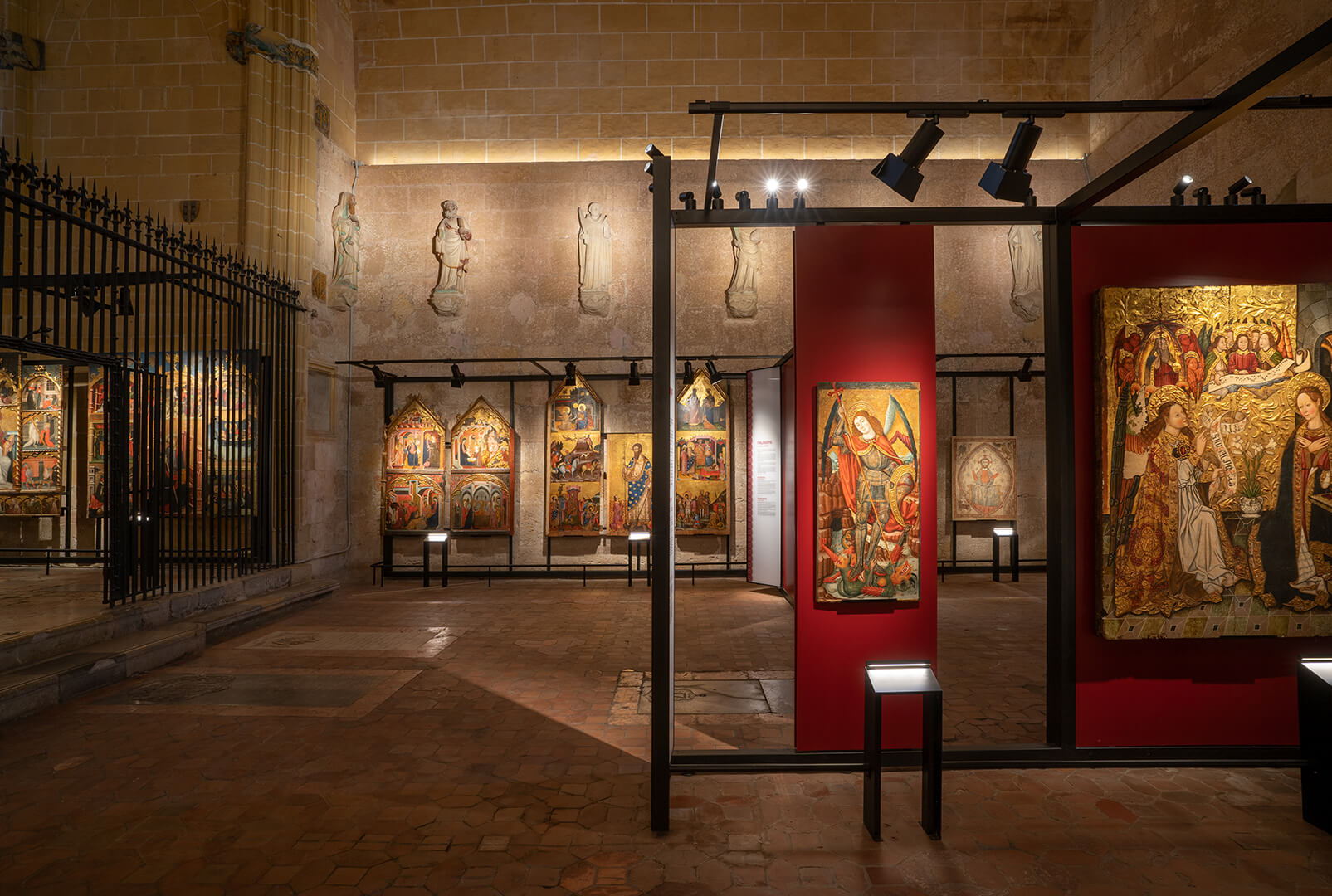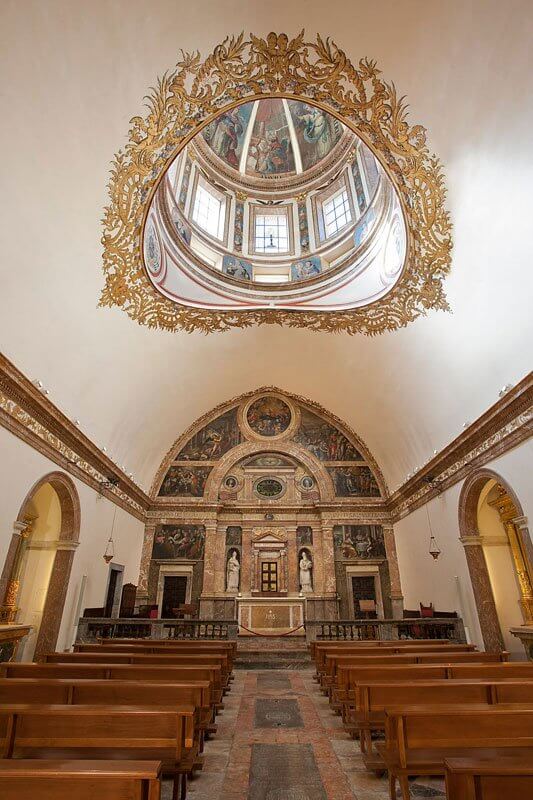Diocesan Museum of Tarragona
Highlights of the Cathedral / Diocesan Museum of Tarragona
The Diocesan Museum of Tarragona was founded in 1914 by Archbishop Antolín López Peláez using the archdiocesan art collection and some important donations from prelates and the Cathedral Chapter itself. The Museum's collection is made up of more than 10,000 works, of which three hundred are exhibited.
The Museum's narrative begins with a selection of the most important archaeological pieces, including the sarcophagus antependium dedicated to Apollo and the Muses, the funerary text for the charioteer Eutyches and a horseshoe arch from Madinat al-Zahra. It continues with an exhibition of Romanesque sculpture, both decorative and funerary and devotional, located in the incomparable setting of the 12th-century Canons’ Refectory.
The Corpus Christi chapel
The Corpus Christi chapel, formerly the Chapter House, holds the collection of Gothic art, the most important in southern Catalonia, boasting treasures such as the hangings from the reliquary of Saint Thecla, from the Cathedral itself, the central panel from the Altarpiece of the Saints John, from Vinaixa, by Bernat Martorell, and the Altarpiece from Alcover, by Jaume Ferrer II. The extraordinary panels of the Annunciation by Jaume Huguet and the Nativity by Vicent Macip, master of Cabanyes, culminate the collection and link with the Renaissance and Baroque art present in the following rooms, with the Resurrection of Vallespinosa by Pietro Paolo da Montalbergo, the Pietà by Antoni Viladomat and the Martyrdom of Saint Fructuosus by Josep Juncosa.
The Baroque Chapter House
The exhibition ends in the Baroque Chapter House, which holds the enormous 15th- century tapestry known as the Tapestry of the Good Life or of the Powers, from the workshops of Arras in northern France, with an allegory of good government, the arts and virtues, which was donated to the Cathedral by Archbishop Heredia, governor of Rome and president of the Generalitat. A display of Baroque imagery accompanies the tapestry, with exquisite works by the Bonifàs family and monumental images created by Antoni Pallàs.
Other notable pieces in the Diocesan Museum are the Escaladei Bible, an illuminated manuscript from the 13th century whose pages are full of curious miniatures, and the Modernista monstrance by Bernardí Martorell, a follower of Antoni Gaudí, full of golden filigree that hangs from the baldachin and frames the monstrance bristling with angelic wings and set with jewels.








